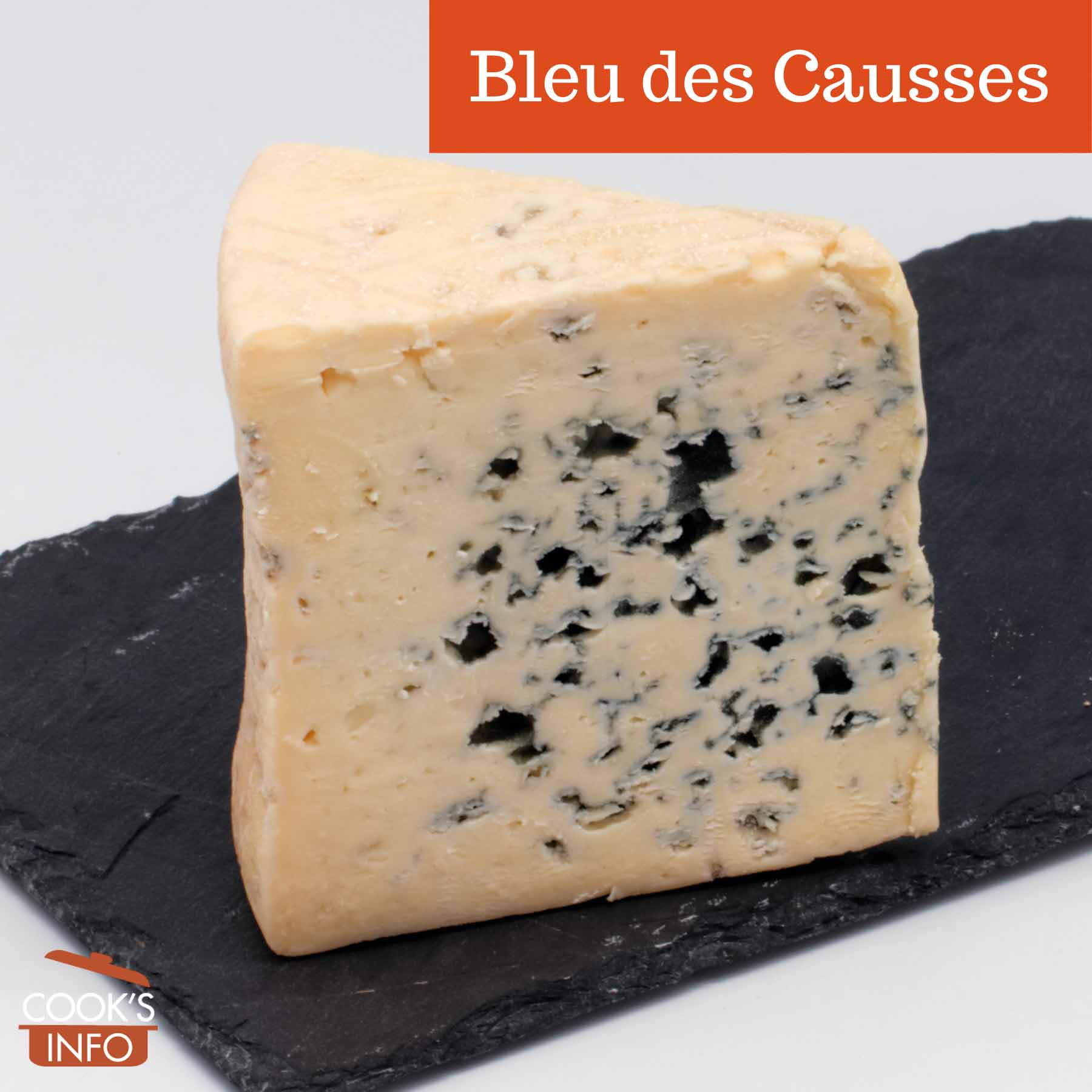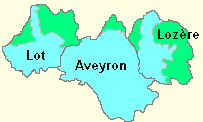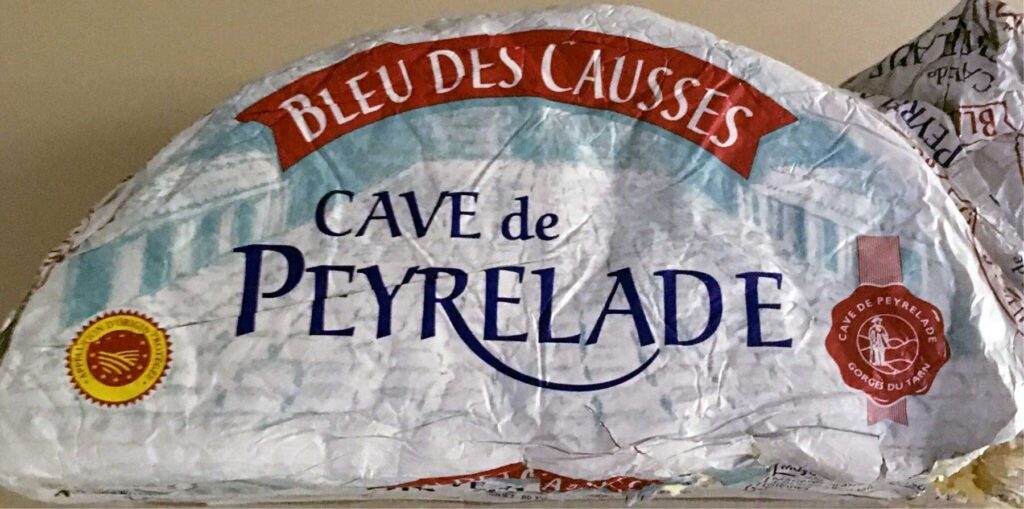
Bleu des Causses. Coyau / wikimedia / 2015 / CC BY-SA 3.0
Bleu des Causses is a blue cheese made from cow’s milk. [1]”Le Bleu des Causses est un fromage au lait de vache..” — Fiche produit: Blue des Causses. Institut national de l’origine et de la qualité. 11 February 2020. Accessed June 2021 at https://www.inao.gouv.fr/produit/3265. An error seems to have slipped past proofreading of the great Penguin Companion to Food by Alan Davidson, where the entry on Roquefort (2002, page 803) says “blue des causses, also made from sheep’s milk…”
The cheese ends up with a 45% minimum fat content. Inside, it is creamy but crumbly, with blue mould veins. On the outside, it can develop a soft crust.
Bleu des Causses is milder and less expensive than its neighbour and cousin, Roquefort cheese, which is made from sheep’s milk.
See also: Blue Cheeses
Production
The cheese is made in cylinders 20 cm wide by 10 cm tall (8″by 4″), with an average weight of 2.5 kg (about 5 pounds). It takes 8 to 9 litres (7 to 8 Imperial quarts) of milk to make 1 kg (2 ¼ pounds) of the cheese.
Bleu des Causses cheeses made in the winter are white inside, with a stronger taste that comes from being aged longer. Winter cheeses are made with raw milk.
The cheeses that are made in summer have an ivory colour, and are moister. The milk for them is heated to 68 C (155 F) to reduce the risks of listeria developing in the cheese.
The cheese can be legally made wherever it it is possible to age it in the natural limestone caves of the Tarn gorge (“Gorges du Tarn”) in the centre of southern France. This works out to be several parts of the departments of Averyon, Lot, Lozère and Gard.

Bleu des causses production area. Sybren / wikimedia / 2005 / CC BY-SA 3.0
In Peyrelade, a village in the middle of the Gorges du Tarn near to where Roquefort cheese is made, there are caves aerated by natural chimneys called “fleurines” in which the cheeses are aged. The cheeses are put on oak shelves in the caves and aged 3 to 6 months.
Equivalents
1 cup, crumbled = approx. ¼ pound = approx. 100 g
History Notes
Up until 1925, the makers of this cow’s milk blue cheese often tried to call it Roquefort cheese, even though their cheese was made with cow’s milk or a mixture of cow’s and sheep’s milk, while Roquefort is made with pure sheep’s milk.
In 1925, however, the makers of Roquefort with pure sheep’s milk received exclusive rights to that name, so in 1926 other local blue cheese makers using cow’s milk decided to call theirs “Bleu d’Aveyron“.
In 1953, the consortium of makers of this cheese got their own legally defined classification for it. At the same time, they changed the name of it from Bleu d’Aveyron to its present name of Bleu des Causses.

Bleu des Causses from Peyrelade. Kiliweb / Open Food Facts / CC BY-SA 3.0
References
| ↑1 | ”Le Bleu des Causses est un fromage au lait de vache..” — Fiche produit: Blue des Causses. Institut national de l’origine et de la qualité. 11 February 2020. Accessed June 2021 at https://www.inao.gouv.fr/produit/3265. An error seems to have slipped past proofreading of the great Penguin Companion to Food by Alan Davidson, where the entry on Roquefort (2002, page 803) says “blue des causses, also made from sheep’s milk…” |
|---|

